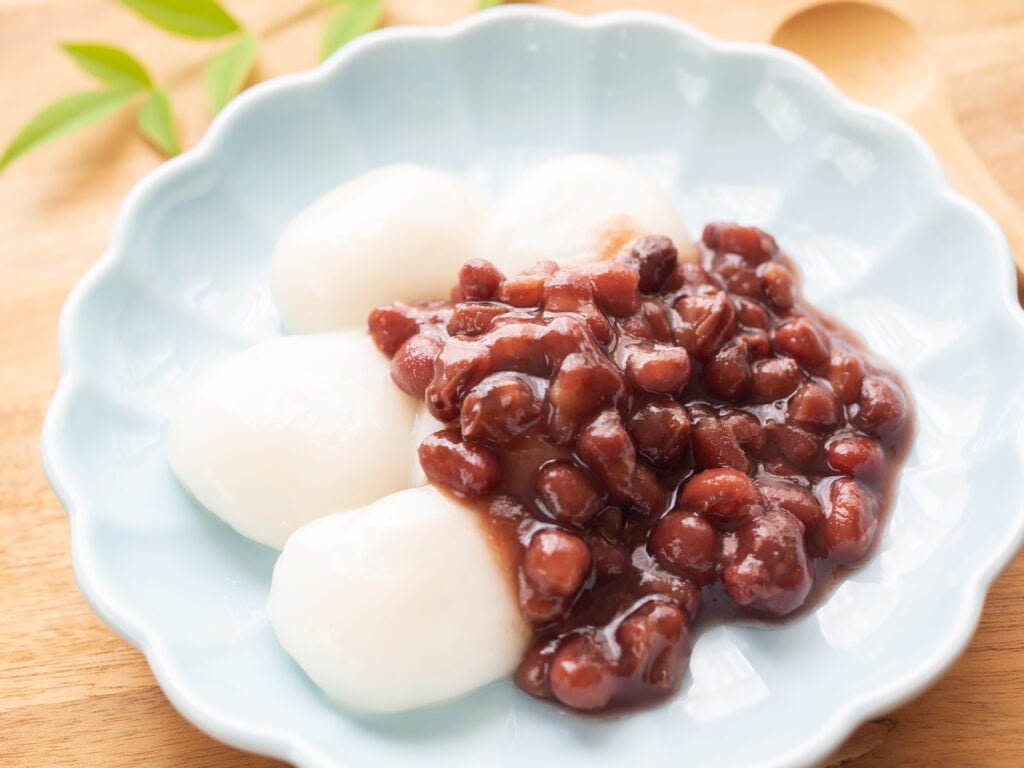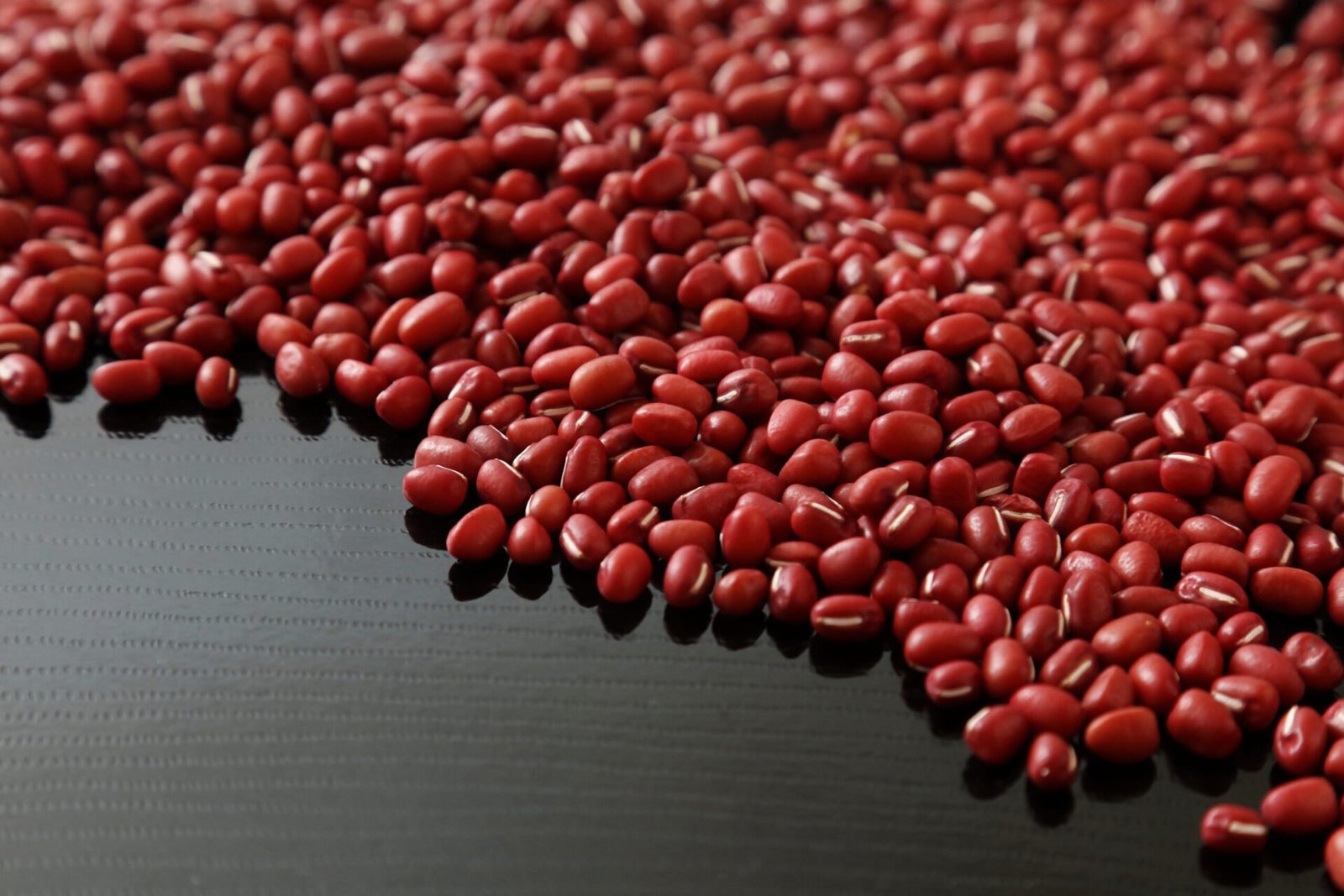Azuki Beans: The Superfood at the Heart of Wagashi and Japanese Sweets
Azuki beans are not just the star of wagashi and Japanese sweets; they’re also a hidden superfood deeply rooted in Japan’s culinary tradition. These small red beans are essential in creating many beloved Japanese desserts, while offering surprising nutritional benefits. Let’s explore the world of azuki and its pivotal role in Japanese confectionery.
The Rich History of Azuki in Japanese Desserts
The history of azuki in Japan dates back to ancient times. Archaeological evidence shows that carbonized azuki seeds have been found in ruins from the Jomon period to the early Kofun period, indicating that azuki has existed in the Japanese archipelago for a very long time.
Azuki is also mentioned in classical Japanese literature. It first appears in the “Kojiki,” compiled in the early Nara period, and is referred to as one of the five grains in the “Nihon Shoki.” These references suggest that azuki was already recognized as an important crop at that time.
Recent DNA research suggests that Japanese azuki may have evolved as a genetically separate lineage from Chinese azuki. This indicates the unique development of azuki in Japan and further emphasizes its importance in Japanese food culture.
Traditionally, azuki was believed to have the power to ward off evil spirits and was treasured as a lucky charm. Its red color was thought to prevent misfortune, making it an essential ingredient in seasonal events and celebrations. This tradition continues to this day, deeply rooted in Japanese food culture.
Diversity in Sweetness: Azuki Varieties in Wagashi
While “azuki” typically brings to mind red beans, there are actually various cultivars. Over 90% of Japan’s azuki harvest is produced in Hokkaido, with representative varieties including “Erimo Shozu” and “Kitano Otome” from Hokkaido.
There are also azuki beans of colors other than red. White azuki is used as an ingredient for “shiro-an” (white bean paste) in Japanese sweets and is highly valued for high-end wagashi. Black azuki is prized in Chinese herbal cuisine and is gaining attention as a health food due to its high polyphenol content.
These varieties have their own unique flavors and textures and are used for different purposes. For example, the large-grained “Dainagon” is known as a premium variety used mainly for coarse bean paste, candied beans, and red rice.
Azuki has agricultural characteristics that require crop rotation and cannot be continuously cultivated in the same field. In recent years, azuki production has expanded overseas, including in Canada, with improving quality.

Nutritional Powerhouse: Azuki’s Role in Healthy Japanese Sweets
Azuki is sometimes called a “Japanese superfood” due to its high nutritional value. Notable nutrients include:
- Polyphenols: Azuki contains more than twice the polyphenols of blueberries.
- Dietary Fiber: Azuki is rich in dietary fiber, containing about 17g per 100g.
- Protein: Azuki is an excellent source of plant-based protein, containing about 20g per 100g.
- Minerals: Rich in potassium, magnesium, and iron. Its iron content is about twice that of spinach.
- B Vitamins: Especially rich in vitamin B1, containing about twice as much as brown rice and ten times as much as white rice.
Health Benefits of Azuki: Traditional Wisdom Backed by Science
The following potential health benefits of azuki consumption have been suggested:
- Blood Sugar Impact: The dietary fiber in azuki may influence sugar absorption.
- Antioxidant Effects: The antioxidant action of polyphenols may reduce cellular oxidative stress.
- Water Balance: The potassium content may influence the body’s water balance.
- Iron Supply: Azuki may serve as a source of iron intake.
- Vitamin B1 Supply: The vitamin B1 content may be involved in carbohydrate metabolism.
However, further scientific research is needed regarding the extent of these health effects and the necessary intake amounts.
Azuki in Japanese Food Culture: Seasonal Wagashi and Desserts
Azuki plays an important role in Japanese food culture as seasonal event food:
- New Year: “Kuromame” in Osechi cuisine
- Spring: Sakura mochi and Botamochi
- Summer: Mizu yokan and Azuki shaved ice
- Autumn: Ohagi (Botamochi)
- Winter: Zenzai and Azuki zoni
Conclusion : The Future of Azuki – New Possibilities and Challenges
Azuki beans are more than just an ingredient in wagashi and Japanese sweets – they’re a superfood that bridges tradition and modern nutrition. As you explore the world of Japanese desserts, remember that each sweet bite of azuki carries centuries of culture and a wealth of health benefits. Whether you’re enjoying a traditional wagashi or experimenting with new Japanese dessert creations, azuki beans offer a delicious way to connect with Japan’s rich culinary heritage.
